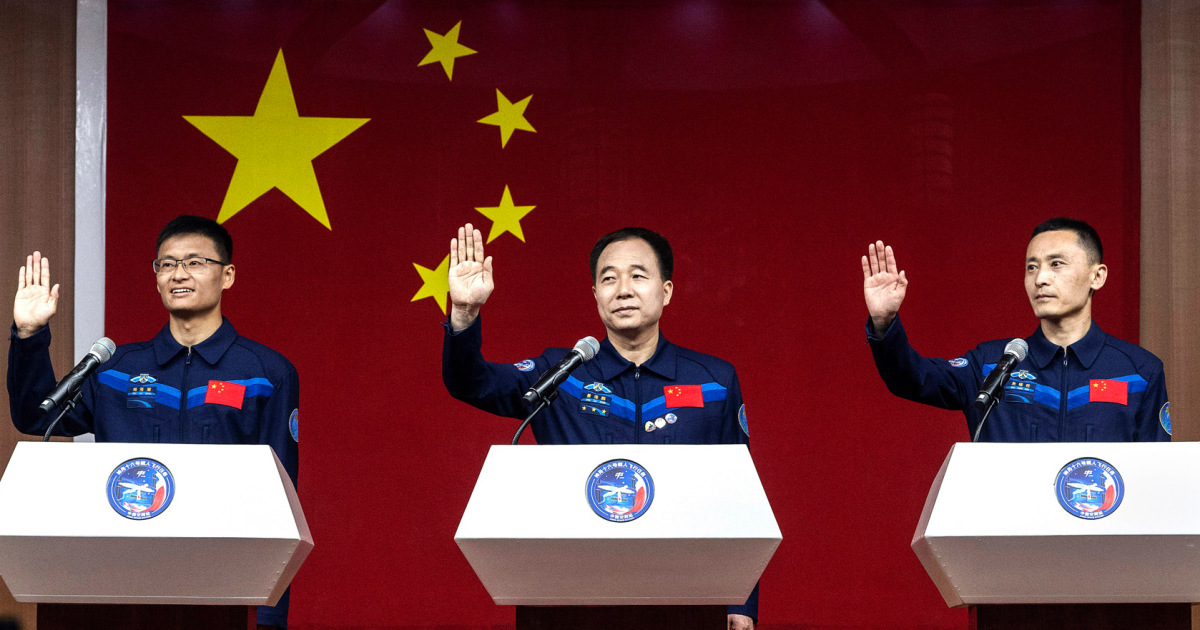BEIJING — China flourishing space program plans to put astronauts on the moon by 2030 and expand the country’s orbiting space station, officials said Monday.
Monday’s announcement comes against the backdrop of a rivalry with the US over reaching new milestones in outer space, reflecting their competition to influence global events.
That has evoked memories of the space race between the US and the former Soviet Union in the 1960s and 1970s, though US spending, supply chains and capabilities are thought to give it a significant advantage over China, by less for now.
The United States aims to return astronauts to the lunar surface by the end of 2025 as part of a renewed commitment to manned missions, with the help of private sector players such as SpaceX and Blue Origin.
The deputy head of China’s space agency confirmed the two targets at a news conference, but did not give specific dates.
The agency also featured three astronauts who will head to the country’s space station in a launch scheduled for Tuesday morning. They will replace a crew who have been on the orbital station for six months.
China is preparing first for a «short stay on the lunar surface and joint human-robotic exploration,» deputy director of China’s Manned Space Agency Lin Xiqiang told reporters at the rare briefing of the military-led program. .
“We have a complete near-Earth human space station and a round-trip human transportation system,” complete with a process for selecting, training and supporting new astronauts, he said. A schedule of two manned missions a year is «sufficient to carry out our objectives,» Lin said.
The Tiangong space station was said to have been finished in November when the third section was added.
A fourth module will be launched «at an appropriate time to promote support for scientific experiments and provide the crew with better working and living conditions,» Lin said.
The trio set to launch aboard the Shenzhou 16 spacecraft will briefly overlap with the three astronauts who have lived on the station for the previous six months conducting experiments and assembling equipment inside and outside the vehicle.
The new crew includes a civilian for the first time. All previous crew members have been in the People’s Liberation Army, the military wing of the country’s ruling Communist Party.
Gui Haichao, a professor at Beijing’s top aerospace research institute, will join mission commander Jing Haipeng and spacecraft engineer Zhu Yangzhu as a payload expert.
Speaking to the media at the launch site outside the northwestern city of Jiuquan, Jing said the mission marked «a new stage of application and development» in China’s space program.
«We firmly believe that the spring of China’s space science has arrived, and we have the determination, confidence and ability to resolutely complete the mission,» said Jing, a major general who has carried out three previous space flights.
China’s first manned space mission in 2003 made it the third country, after the USSR and the US, to send a person into space.
China built its own space station after it was banned from the International Space Station, largely due to US objections over Chinese space programs’ intimate ties to the PLA.
Space is increasingly seen as a new area of competition between China and the United States, the world’s two largest economies and rivals for diplomatic and military influence, one a highly centralized, one-party state, the other a democracy where partisan division largely evaporates. the issues of relations with China and space exploration.
The astronauts NASA sends to the moon in late 2025 will aim for the south pole, where permanently shadowed craters are thought to be filled with frozen water.
Both countries are also considering plans for permanent manned bases on the moon, raising questions about rights and interests on the lunar surface. US law strictly restricts cooperation between the two countries’ space programs, and while China says it welcomes foreign collaborations, they have so far been limited to scientific research.
Speaking Monday afternoon in Jiuquan, the chief technology officer of China’s human spaceflight agency, Li Yingliang, said China hoped for more international collaboration, including with the US.
«Our country’s consistent position is that as long as the goal is to use space for peaceful purposes, we are willing to cooperate and communicate with any country or aerospace organization,» Li said.
“I personally regret that the US Congress has relevant motions banning US-China aerospace cooperation. Personally, I am very sorry, ”he said.
In addition to their lunar programs, the US and China have also landed rovers on Mars and Beijing plans to follow the US in landing a spacecraft on an asteroid.
Other countries and organizations ranging from India and the United Arab Emirates to Israel and the European Union are also planning lunar missions.
The United States sent six manned missions to the moon between 1969 and 1972, three of which involved the use of a drivable lunar rover that China says it is now developing through private sector tenders.
While the United States currently operates more spaceports and has a much broader network of international and trading partners than China, the Chinese program has proceeded steadily and cautiously, reflecting the country’s greatly increased economic power and global influence. since the 1980s.

